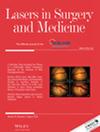Multimodal feedback systems for smart laser osteotomy: Depth control and tissue differentiation
Abstract
Objectives
The study aimed to improve the safety and accuracy of laser osteotomy (bone surgery) by integrating optical feedback systems with an Er:YAG laser. Optical feedback consists of a real-time visual feedback system that monitors and controls the depth of laser-induced cuts and a tissue sensor differentiating tissue types based on their chemical composition. The developed multimodal feedback systems demonstrated the potential to enhance the safety and accuracy of laser surgery.
Materials and Methods
The proposed method utilizes a laser-induced breakdown spectroscopy (LIBS) system and long-range Bessel-like beam optical coherence tomography (OCT) for tissue-specific laser surgery. The LIBS system detects tissue types by analyzing the plasma generated on the tissue by a nanosecond Nd:YAG laser, while OCT provides real-time monitoring and control of the laser-induced cut depth. The OCT system operates at a wavelength of 1288 ± 30 nm and has an A-scan rate of 104.17 kHz, enabling accurate depth control. Optical shutters are used to facilitate the integration of these multimodal feedback systems.
Results
The proposed system was tested on five specimens of pig femur bone to evaluate its functionality. Tissue differentiation and visual depth feedback were used to achieve high precision both on the surface and in-depth. The results showed successful real-time tissue differentiation and visualization without any visible thermal damage or carbonization. The accuracy of the tissue differentiation was evaluated, with a mean absolute error of 330.4 μm and a standard deviation of ±248.9 μm, indicating that bone ablation was typically stopped before reaching the bone marrow. The depth control of the laser cut had a mean accuracy of 65.9 μm with a standard deviation of ±45 μm, demonstrating the system's ability to achieve the pre-planned cutting depth.
Conclusion
The integrated approach of combining an ablative laser, visual feedback (OCT), and tissue sensor (LIBS) has significant potential for enhancing minimally invasive surgery and warrants further investigation and development.

| 公司名称 | 产品信息 | 采购帮参考价格 |
|---|

 求助内容:
求助内容: 应助结果提醒方式:
应助结果提醒方式:


